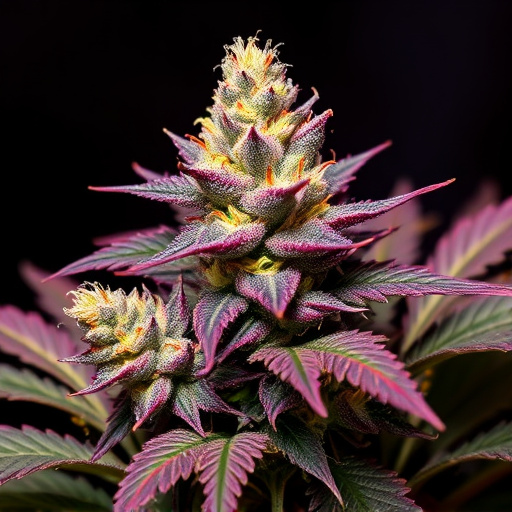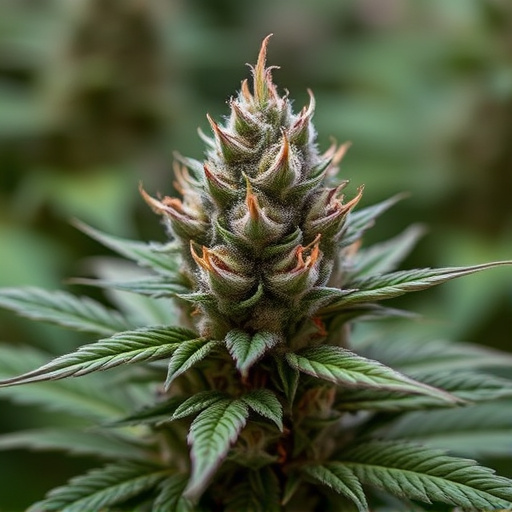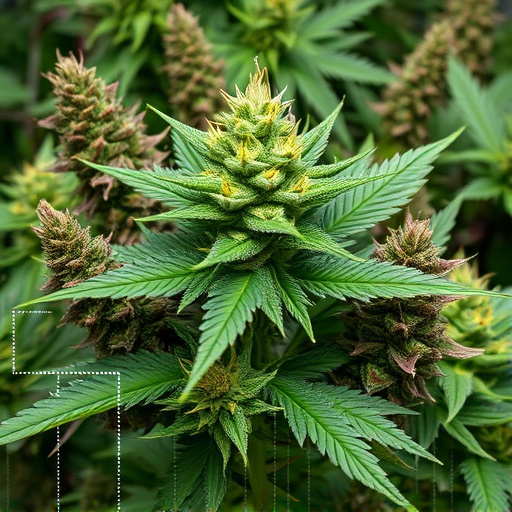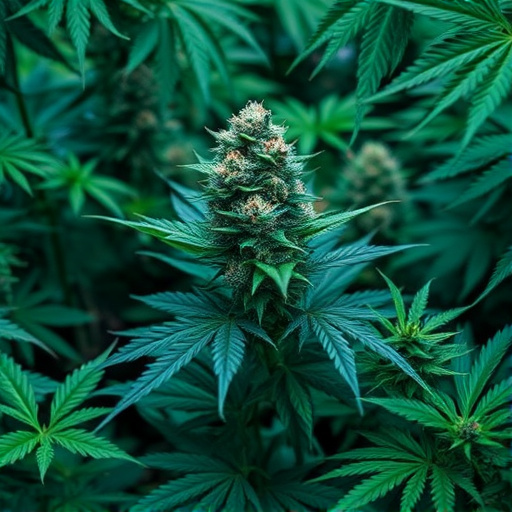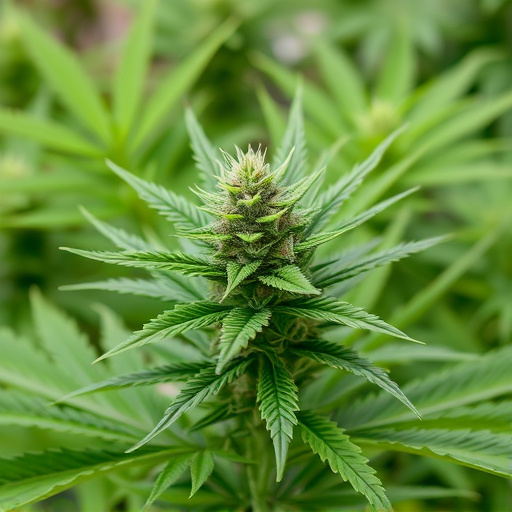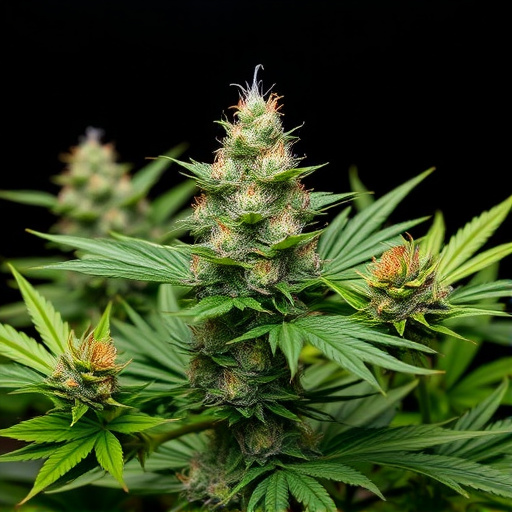In medical cannabis therapy, understanding full-spectrum vs isolated cannabinoids is key. Full-spectrum oils, containing various compounds like terpenes and flavonoids alongside THC & CBD, offer holistic benefits through synergistic interactions for conditions requiring a balance of anti-inflammatory, analgesic, and anxiolytic properties. Isolated forms focus on single compounds in high concentration, enabling precise dosing for specific symptoms like chronic pain or anxiety but lacking the entourage effect. Different popular strains, rich in key cannabinoids, terpenes, and flavonoids, interact through the entourage effect to provide unique therapeutic benefits; Charlotte's Web (CBD) treats seizures & anxiety without psychoactive effects, while Granddaddy Purple (THC) offers potent pain relief & sleep inducement. Exploring these medical cannabis strains allows patients to make personalized choices based on their specific needs.
In the realm of medical cannabis, understanding the distinction between full-spectrum and isolated cannabinoids is paramount for patients seeking optimal relief. This article delves into these two forms, shedding light on their unique properties and effects. We explore the medical benefits associated with each, comparing their efficacy across various conditions. Additionally, we navigate popular medical cannabis strains and their cannabinoid compositions, providing insights that empower informed decisions in today’s burgeoning market.
- Understanding Full-Spectrum and Isolated Cannabinoids
- Medical Benefits of Full-Spectrum vs. Isolated Forms
- Exploring Popular Medical Cannabis Strains and Their Composition
Understanding Full-Spectrum and Isolated Cannabinoids
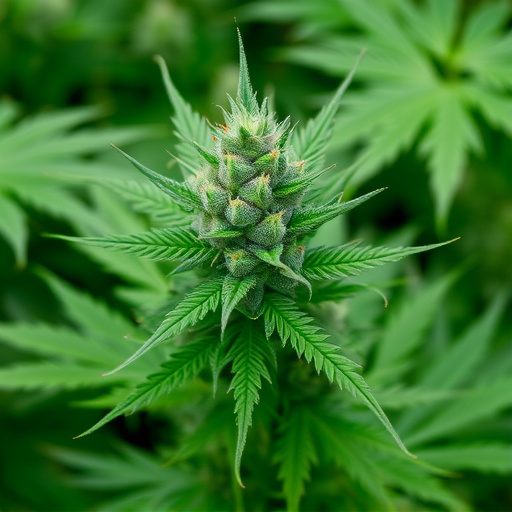
Cannabinoids are the chemical compounds found in medical cannabis strains that interact with our bodies’ endocannabinoid system, playing a crucial role in various physiological functions. When discussing cannabinoids, two main categories emerge: full-spectrum and isolated. Full-spectrum cannabinoids refer to the complete range of cannabinoids present in a particular strain, including minor compounds like terpenes and flavonoids. This natural combination mirrors what one would find in the plant itself, offering a more holistic approach to potential therapeutic benefits.
Isolated cannabinoids, on the other hand, are single or a few selected cannabinoids extracted from the plant matter, leaving out other beneficial compounds. While this process allows for precise dosing of specific cannabinoids like THC or CBD, it may overlook the potential synergistic effects that occur when these compounds interact in their natural state within the full-spectrum extract. Understanding these distinctions is vital when considering the most appropriate form of cannabinoids for individual needs and preferences in medical cannabis therapy.
Medical Benefits of Full-Spectrum vs. Isolated Forms
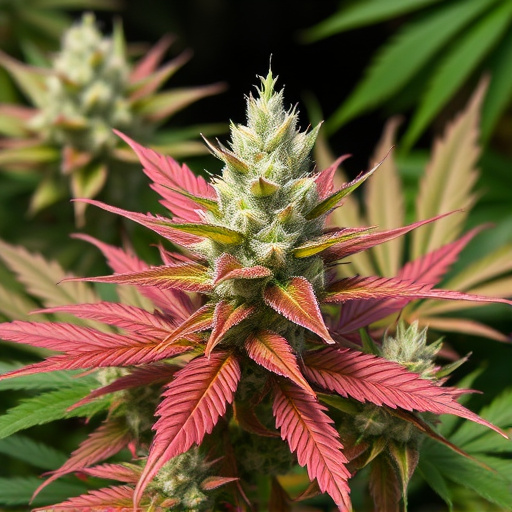
Full-spectrum and isolated cannabinoids offer distinct medical benefits, with each having its own advantages and considerations. Medical cannabis strains that contain full-spectrum cannabinoids provide a wide range of potential therapeutic effects because they include numerous compounds found in the plant, such as terpenes and flavonoids. These additional compounds can enhance or modulate the effects of specific cannabinoids like THC and CBD, potentially leading to more balanced and holistic outcomes for patients. For example, full-spectrum oils may offer better symptom relief for conditions that require a combination of anti-inflammatory, analgesic, and anxiolytic properties.
In contrast, isolated cannabinoids focus on delivering a single cannabinoid in high concentration, typically either THC or CBD. This approach allows for precise dosing and targeted treatment of specific symptoms or conditions where one particular cannabinoid shows the most promise. For instance, patients with severe chronic pain may benefit from isolated CBD due to its anti-inflammatory properties, while those dealing with anxiety could find relief through isolated THC’s psychoactive effects. However, by isolating a single cannabinoid, potential synergistic interactions between compounds in full-spectrum oils are absent.
Exploring Popular Medical Cannabis Strains and Their Composition
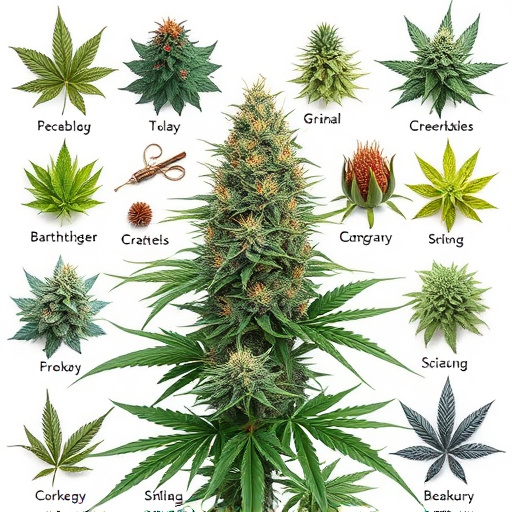
In the world of medical cannabis, understanding different strains and their unique compositions is crucial for patients seeking specific therapeutic benefits. Popular medical cannabis strains are often characterized by high concentrations of specific cannabinoids, such as THC or CBD, alongside a complex mix of other minor cannabinoids, terpenes, and flavonoids. These compounds work synergistically to create what’s known as the entourage effect, enhancing or modifying the actions of the primary cannabinoids in the body.
For instance, strains like Charlotte’s Web are renowned for their high CBD content, making them popular for treating seizures and anxiety without the strong psychoactive effects of THC. Conversely, strains with elevated THC levels, like Granddaddy Purple, are sought after for their potent pain-relieving and sleep-inducing properties. Exploring these medical cannabis strains and their specific compositions allows patients to make informed decisions tailored to their individual needs and conditions.
In comparing full-spectrum and isolated cannabinoids, it’s evident that both have their merits in the realm of medical cannabis treatment. Full-spectrum offers a holistic approach, providing a symphony of terpenes and minor cannabinoids that work synergistically for potential therapeutic benefits. Isolated cannabinoids, on the other hand, provide targeted relief by focusing on individual compounds like THC or CBD. When considering medical cannabis strains, understanding their composition is key. Each strain boasts a unique cannabinoid profile, catering to diverse patient needs and preferences. Ultimately, choosing between full-spectrum or isolated forms depends on individual health goals and desired effects from these powerful natural compounds found in medical cannabis strains.


